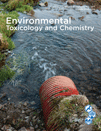Environmental Toxicology and Chemistry 31(7)
Overview of new articles on POPs in a new issue of the Environmental Toxicology and Chemistry journal.

(pages 1424–1430)
Xiang-Zhou Meng, Nan Xiang, Yan-Ping Duan, Ling Chen and Eddy Y. Zeng
- Levels of hexabromocyclododecane (HBCD) were determined in 12 consumer fish species from South China. The concentrations of the sum of HBCD diastereoisomers (ΣHBCD) ranged from nondetectable to 194 pg/g wet weight, with a detectable frequency of 70%.
Mechanisms regulating bioavailability of phenanthrene sorbed on a peat soil-origin humic substance
(pages 1431–1437)
Yu Yang, Liang Shu, Xilong Wang, Baoshan Xing and Shu Tao
- The organic matter–mineral complex plays an important role in regulating the fate of hydrophobic organic compounds (HOCs) in the environment. In the present study, the authors investigated the microbial bioavailability of phenanthrene (PHE) sorbed on the original and demineralized humic acids (HAs) and humin (HM) that were sequentially extracted from a peat soil.
(pages 1453–1460)
Brian J. Asher, Matthew S. Ross and Charles S. Wong
- The Swan Hills Treatment Centre (SHTC), located in central Alberta, is the primary facility in Canada for incinerating polychlorinated biphenyls (PCBs). Past studies have shown significant contamination by PCBs and other pollutants of the immediate surrounding region. However, it is unclear whether the major source of contamination to the region's atmosphere is historical release incidents or long-term emissions. To answer this question, concentrations of PCBs and enantiomer fractions of several PCB congeners were determined in soil and air, via polyurethane foam passive samplers, over several seasons between 2005 and 2008.
(pages 1470–1477)
Helvécio C. Menezes and Zenilda L. Cardeal
- Polycyclic aromatic hydrocarbons (PAHs) were analyzed from ambient air particulate matter <10 µm (PM10) and the total suspended particulate (TSP) phase continuously for a period of six months (May–October 2010) at five sampling sites located in the urban area of Divinópolis (Minas Gerais), southeastern Brazil, near iron and steel mills.
(pages 1494–1500)
Hong-Gang Ni and Eddy Y. Zeng
- Nine chlorinated and brominated polycyclic aromatic hydrocarbons (Cl/BrPAHs) and five parent polycyclic aromatic hydrocarbons (PAHs) were measured in urban surface soil and fly ash samples collected from Shenzhen, south China in winter 2010.
18.6.2012




